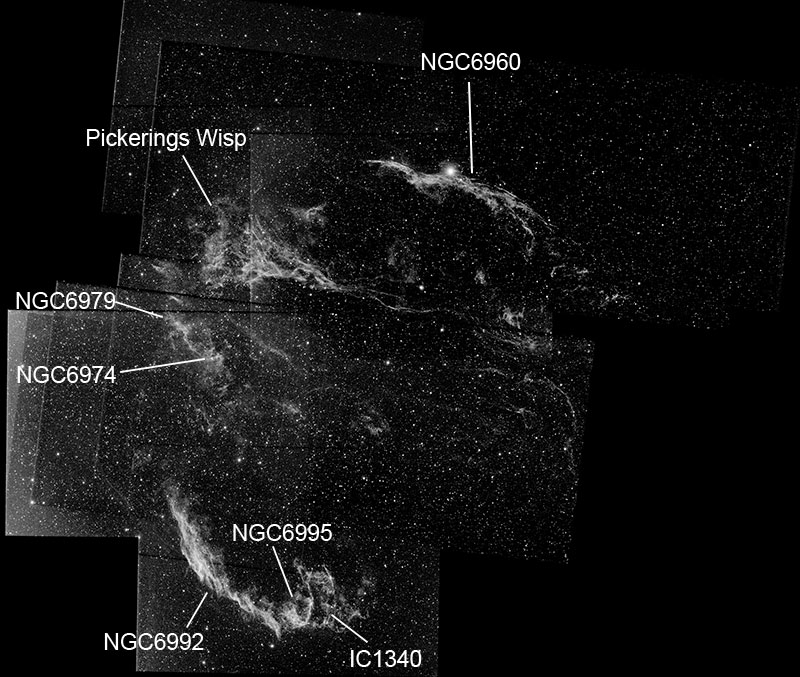|
I've taken many pictures of parts of the Veil Nebula over the years - you can see them in my Galley. Back in the days when the New General Catalogue was compiled (thats where the NGC designation comes from), the parts of the Veil Nebula were given separate designations.

This year, I decided to see if I could take a picture of the whole of the Veil Nebula. My camera (SXVR-H18) and telescope (101mm @ F/7) combination can only see 1.4 x 1.1 degrees at F/5.6 with my Televue Focal Reducer, so to get the complete veil requires taking images of different areas of the sky, and stitching them together. You can see the boundaries of the panes in the image above. Each 'pane' is the result of stacking many images together. So far there are 97 images making up this mosaic. So far, I have been concentrating on the Hydrogen emission wavelength with my Ha narrowband filter.
This will be a several year project, as I then need to shoot with an Oiii (Oxygen) filter, and then choose whether to shoot with an Hb (Hydrogen Beta) or Sii (Sulphur). I might even be able to incorporate some of the data from previous imaging runs - time will tell. I have some gaps to fill in the Ha band - I just need some clear nights!
Here are some of the other pictures I hope to incorporate should the inclination take me:
NGC6992/NGC6995/IC1340 is known as the Eastern Veil, or Network Nebula
NGC6992 is the bright area, NGC6995 is the 'rectangle' element of the Eastern Veil Nebula. Between the Eastern and Western Veil, Pickerings Wisp is the fainter triangle shaped structure
NGC6960 is known as the Western Veil, Witches Broom, Finger of God, of Filamentry Nebula
At a distance of 1,470 light years away, the Veil Nebula is the result of a supernova which is thought to have exploded 5,000 to 8,000 years ago. The resulting gas and dust released spread out into this 3 degree area of sky (roughly 6 times the diameter of a full moon) in the time since the explosion. It is one of the largest, brightest features in the X-ray band. The dust and gas is estimated to be travelling at the huge speed of 370,000 miles per hour away from the original star which spawned it.
Read more about the Veil Nebula and see a beautiful picture from the Hubble Space Telescope here: http://www.space.com/4136-veil-nebula-pierced-hubble-gaze.html
|